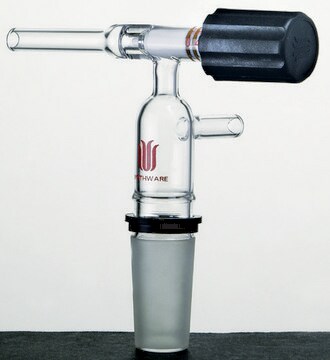Wichtige Dokumente
V800301
Phenol
LR, ≥99%
Synonym(e):
‘Carbolsäure’
About This Item
Empfohlene Produkte
Qualität
LR
Dampfdichte
3.24 (vs air)
Dampfdruck
0.09 psi ( 55 °C)
0.36 mmHg ( 20 °C)
Produktlinie
Vetec™
Assay
≥99%
Form
crystals
Selbstzündungstemp.
1319 °F
Expl.-Gr.
8.6 %
pH-Wert
4.8-6.0 (5% in water)
bp
182 °C (lit.)
mp (Schmelzpunkt)
40-42 °C (lit.)
Dichte
1.071 g/mL at 25 °C (lit.)
SMILES String
Oc1ccccc1
InChI
1S/C6H6O/c7-6-4-2-1-3-5-6/h1-5,7H
InChIKey
ISWSIDIOOBJBQZ-UHFFFAOYSA-N
Suchen Sie nach ähnlichen Produkten? Aufrufen Leitfaden zum Produktvergleich
Rechtliche Hinweise
Signalwort
Danger
Gefahreneinstufungen
Acute Tox. 3 Dermal - Acute Tox. 3 Inhalation - Acute Tox. 3 Oral - Aquatic Chronic 2 - Eye Dam. 1 - Muta. 2 - Skin Corr. 1B - STOT RE 2
Zielorgane
Nervous system,Kidney,Liver,Skin
Lagerklassenschlüssel
6.1A - Combustible acute toxic Cat. 1 and 2 / very toxic hazardous materials
WGK
WGK 2
Flammpunkt (°F)
177.8 °F - closed cup
Flammpunkt (°C)
81 °C - closed cup
Hier finden Sie alle aktuellen Versionen:
Besitzen Sie dieses Produkt bereits?
In der Dokumentenbibliothek finden Sie die Dokumentation zu den Produkten, die Sie kürzlich erworben haben.
Unser Team von Wissenschaftlern verfügt über Erfahrung in allen Forschungsbereichen einschließlich Life Science, Materialwissenschaften, chemischer Synthese, Chromatographie, Analytik und vielen mehr..
Setzen Sie sich mit dem technischen Dienst in Verbindung.




